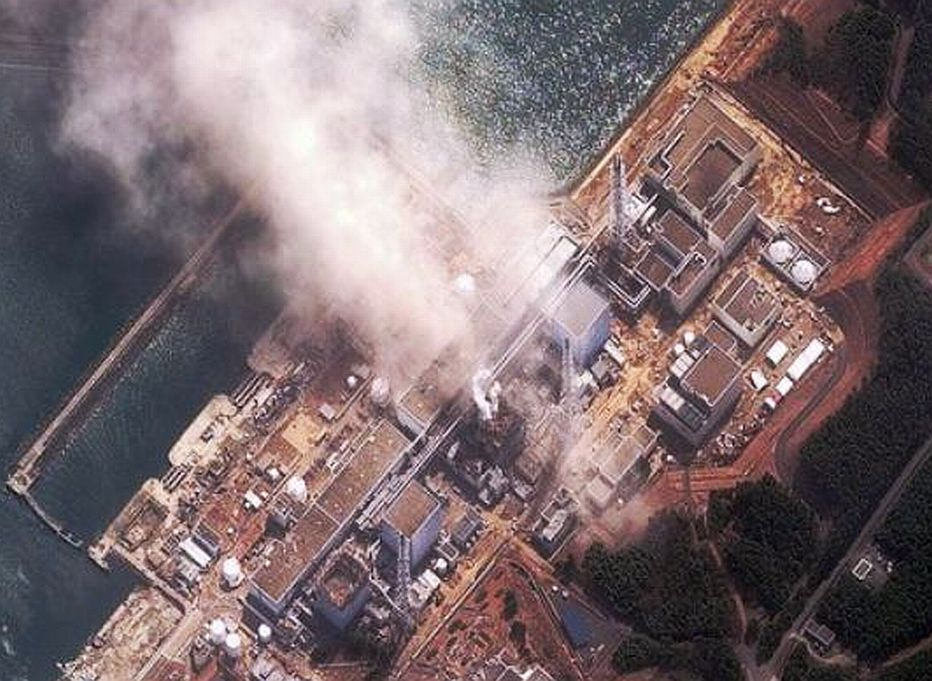The Fukushima disaster, 7 years later.
Hello, people of steemit, and welcome to my page.
Yesterday was the 7th anniversary of the massive 8.9 earthquake off the coast of Japan that caused a major tsunami that killed approximately 18,000 people and swamped the nuclear reactors at Fukushima, causing the loss of all power at the plant, which led to the explosions and meltdown of 3 of the 4 reactors at the site. The radiation release from this disaster was worse than that of the Chernobyl disaster. Within a few days, the radiation in the atmosphere was measurable over areas of the United States as the air currents brought the radioactive fallout across the Pacific ocean. The west coast was hit with the radiation, perhaps worse than the rest of the country. Plutonium particles were found in the radiation detector filters in San Fransisco within a week of the disaster.
2011 was the summer of "don't go out in the rain". Radioactive particles were brought out of the atmosphere with the rain for months after the disaster, perhaps even years. There is still a higher level of radioactive dust in the upper atmosphere than there was before the disaster. Higher background radiation levels were still measurable in 2012, and even later in some areas of the U.S. due to concentrations of fallout because of the weather patterns. Much of the fallout consisted of short half life particles which decay fairly quickly, but a fair amount of it was longer lived particles.
There were trace amounts of uranium and plutonium particles in the fallout, from the fuel rods, but the most common particles were cesium 134, cesium 137 and iodine 131. Cesium 134 has a half life of 2.06 years, and is a common fission byproduct. Cesium 137 has a half life of 30.2 years, and stays in the environment for decades as it decays. Iodine 131 is a highly radioactive isotope with a very short half life of 8.02 days. This isotope dissipates quickly in the environment, but exposure to it can cause thyroid problems including cancers.
At this point in time, all of the iodine 131 has decayed to non radioactive, and much of the cesium 134 has decayed, but the cesium 137 is still with us, and will continue to be for many decades, along with the cesium 137 that is still with us from the above ground nuclear weapons testing. Most of the cesium 137 just contributes to the overall background radiation level that is around us, but some of it continues to float in the upper atmosphere.
Another component of the disaster, one that is still ongoing is the leakage of highly radioactive water into the Pacific ocean from the Fukushima reactor site.. Ground water has been carrying radiation into the ocean for about 7 years now. At this point, the measurable amount of radioactive increase in the waters of the Pacific is still small, but the leakage continues, with no way to stop it. The Pacific ocean is the largest body of water on earth, so it takes a long time for things like radiation to accumulate in it, but the slow accumulation continues. The increase in ocean water radioactivity is small, but measurable off the west coast of Canada and the U.S. With the continuing leakage from Fukushime, what will those levels be like in 10 years?
Scientists have found small measurable increases of radioactivity in fish such as salmon from the north Pacific ocean, and all pacific ocean fish are experiencing the same gradual increase in contamination due to the contamination of their food supply. This will also continue in the near term due to the ongoing leakage from the Fukushima disaster. This is an ongoing problem with no known solution, and no end in sight.
If you would like to know more about this ongoing disaster, there are many information sources available on line. Some of them are controversial, some of them are conservative in their estimates, and some are just clickbait sources. I would suggest that you do some research and come to your own conclusions about this subject.
As for me, I've decided that I'm not going to eat anything that comes out of the Pacific ocean. Radioactive particles in the environment are one thing, but radioactive particles in your food are another thing entirely. Cesium 137 is a highly energetic radioactive particle. Once in your body, it exposes you to Beta and Gamma radiation from the inside. This energetic radiation can damage tissues and increase the incidence of cancers. The radiation exposure continues for as long as the radioactive particle stays in the body. Some people might say that I'm blowing the issue out of proportion, but it is my choice to make, after all, and they can choose what they wish to do with the information at hand.
This subject could be written about at great length, but I'll leave that to someone else.
I hope you found this post interesting, and perhaps it will cause you to do some research of your own on the subject.
Both pictures were found with an image search of pictures labelled for reuse.
Thank you for reading my post!
If you like what I write about, follow me for more posts like this, and other subjects.


